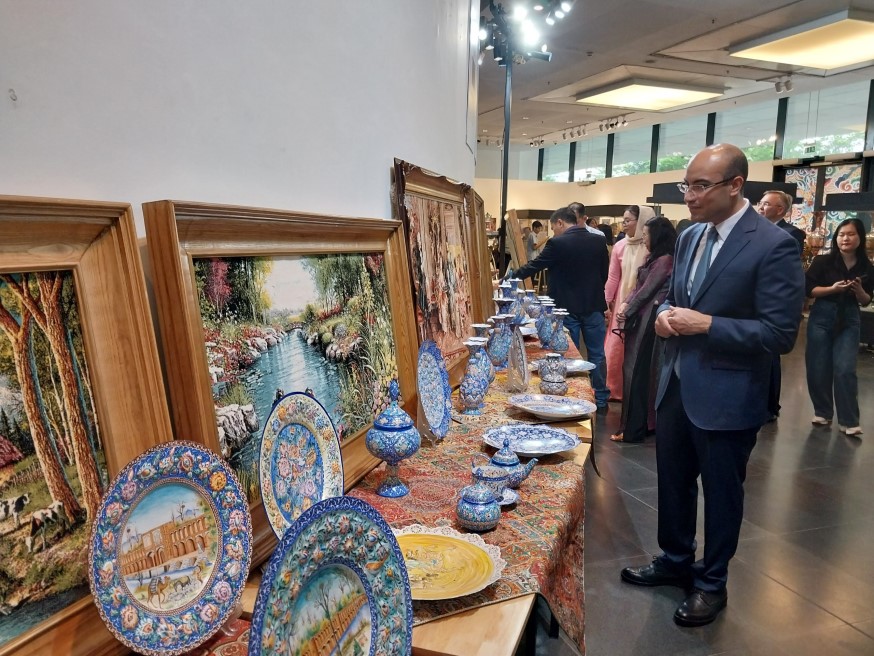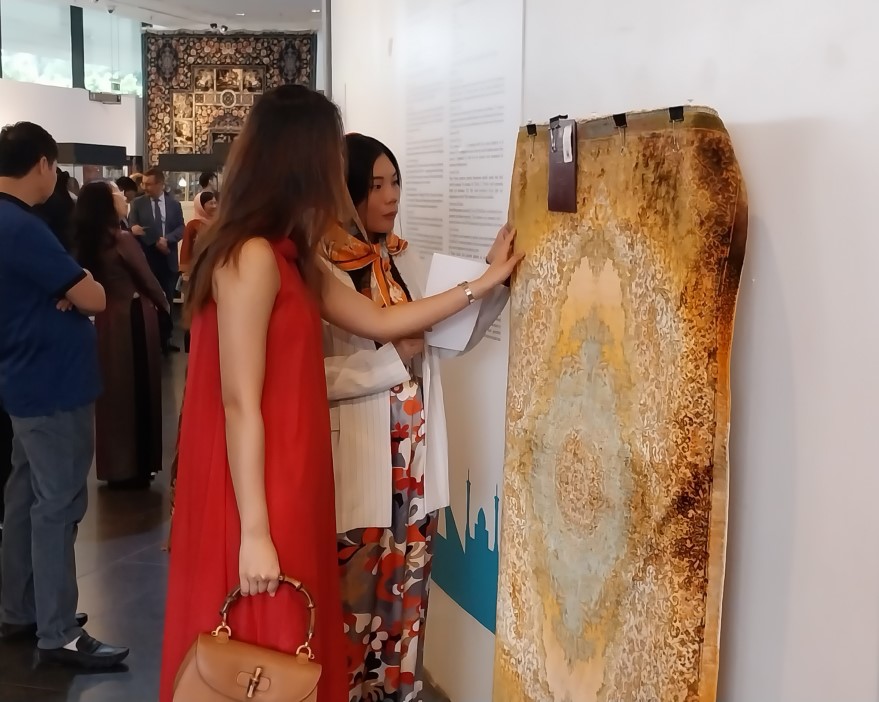
The exhibition Colors and Patterns: The Road to Iranian Art opened at the Hanoi Museum on August 23, showcasing paintings, photographs, calligraphy, and Iranian handicrafts.
The exhibition consists of two thematic areas, summarizing traditional Iranian art (ancient Persian civilization), demonstrating the incredible craftsmanship of Persian artisans, and telling stories about the heritage and development of Iranian culture.
The paintings, photographs, and calligraphy area feature the lotus motif in the Persepolis palace complex, built by order of Darius the Great (518-465 BC) and completed by Emperor Xerxes I (550-486 BC); miniatures by master Mahmoud Farshchian.
| Iranian art paintings and photos area. Photos: Ngo Minh/The Hanoi Times |
The handicrafts exhibition area featured about 100 items representing about 10 types of Iranian art, including Copper carving (Qalam-zani), enamel art (Minakari), carpet weaving (Qali bafi), Persian mosaic (Khatam-kari); turquoise inlay on copper (Firouze-kubi), fabric printing (Qalam-kari), sequined embroidery (Sermeh-doozi), hand-woven fabrics (Termeh-bafi), decorative painting on copper (Mes-o-pardaz).
Speaking at the opening ceremony, Ali Akbar Nazari, Ambassador of the Islamic Republic of Iran, expressed his hope that the exhibition will help the Vietnamese public learn more about Iran's artistic heritage, thus opening up opportunities for cultural and artistic exchanges between the people of the two countries and contributing to the strengthening of Vietnam-Iran relations.
| With its diverse range of artistic manifestations, ranging from carpet weaving to Persian miniatures, Iran adds to the diversity of the global art and cultural landscape. |
"Iran contributes to the richness of the world's art and culture, including a variety of artistic expressions, from carpet weaving to Persian miniatures, from pottery to architecture, from music to calligraphy, from khatam-kari to glass enamel and wood inlay, Iranian handicrafts are beautiful and unique promotional tools representing Iran's cultural heritage. It is a matter of pride to say that Iran has the largest number of handicraft cities and towns recognized by the World Crafts Council (WCC) with 14 locations," the ambassador said.
Accordingly, this exhibition is organized with the aim of presenting a harmonious combination of valuable handicrafts and photographs that show the special beauty of Iranian art and attract viewers with its elegance, patterns, and designs.
"Visitors can experience Iran's ancient art and traditional Iranian handicrafts that have been preserved to this day, immersing themselves in the world of Iranian art through the patterns and motifs that shape our cultural essence," said the ambassador.
The exhibition runs through September 8 at the Hanoi Museum.
| Visitors contemplate the Persian carpet at the exhibition. |






- Hanoi's beauty through watercolors
- Postage stamp honors Hanoi poet
- HABECO – The spirit of Vietnam rising
- Dancing through cultures: Hanoi celebrates the 12th Night of Latin American Music
- The 12th Night of Latin American Music: Celebrating Culture and Friendship
- Exhibition of 20th century Vietnamese art: A rendezvous with masters of painting



